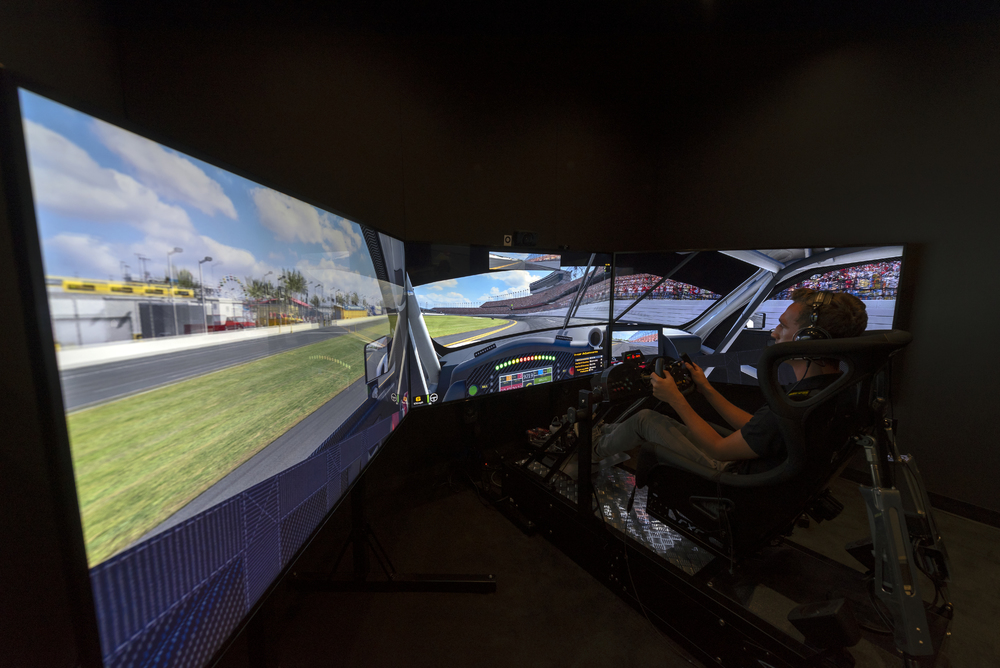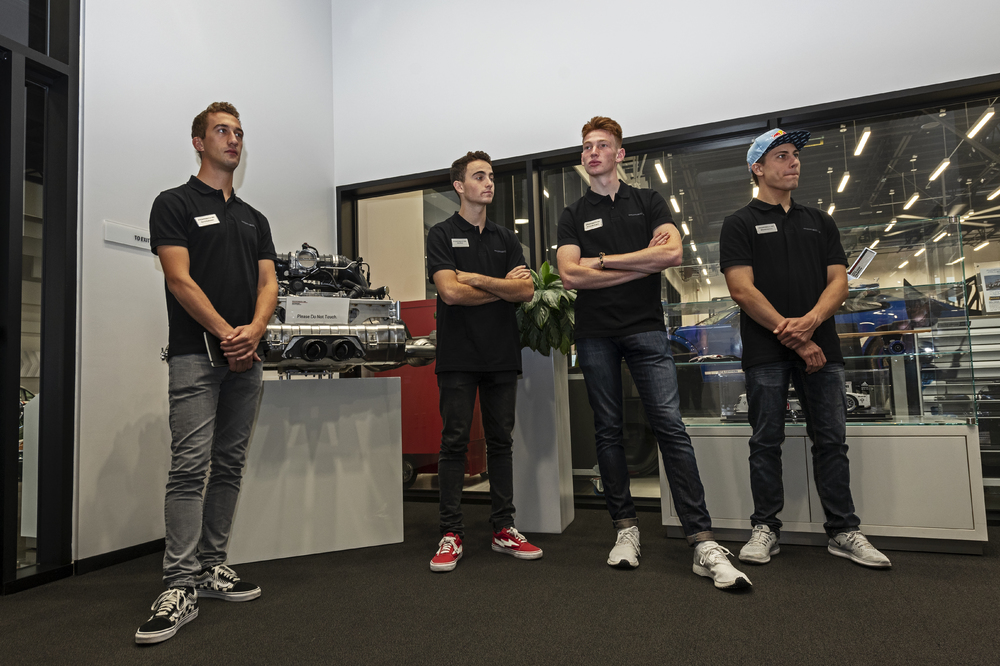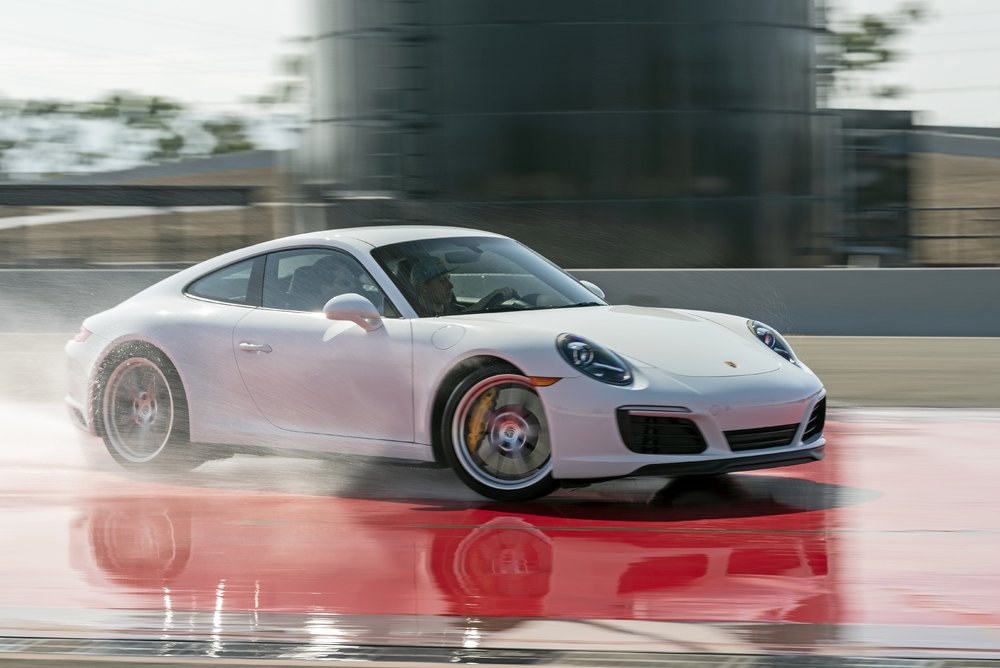Recently, CXC Simulations had a part in the sixth Porsche Young Driver Academy, with four young race car drivers at our Base51 location under the watchful eye of Porsche factory driver Patrick Long and Porsche Motorsport North America race director Owen Hayes.
The Porsche Young Driver Academy is a program which puts young drivers – in this case, Max Root, David Kolkmann, Roman De Angelis and Mitchell De Jong – through an on-track evaluation as well as opportunities to learn more about driving, sports psychology, media interaction and automotive technology. In the past, the program has been held at Barber Motorsports Park, with drivers being evaluated at the wheel of a Porsche race car.
For 2018, the Porsche Young Driver Academy was moved to the Porsche Experience Center in Los Angeles, and Porsche turned to us to fill the void of an at-track evaluation. With the use of the Motion Pro II and Coaching Station, we created a scenario where the drivers were paired off and ‘shared’ a car during a test session not unlike the Roar Before the 24, held at Daytona International Speedway before the Rolex 24 at Daytona.

“The challenge for some of these drivers is migrating the natural ambition of what a single-seater or sprint driver has, which is to get in and go fast at all costs, to endurance racing,” said Long. “The component of being at Daytona simulates a very real scenario of drivers getting a shot at the Roar, getting a car for a few laps, and trying out for a team that may or may not need another driver. They need to balance the objectives of displaying talent as well as maturity.
“What I was looking for from CXC Simulations was to provide the tools to mentally immerse the drivers into a scenario that I find to be one of the biggest challenges for young drivers trying to break into endurance racing.”
The program at Base51 closely followed the scenario of the Roar Before the 24. Practice time was limited, and drivers had to provide feedback to their engineer. A crash would result in the loss of practice time for all drivers, particularly for the one who committed the incident. With the use of the CXC Coaching Station, all the driver’s data was seen in real time and Hayes communicated with them via two-way radio.
“What I was most surprised about was the feeling of pressure and how seriously the drivers took the testing rules,” said Hayes. “It was clear that the simulators and the software provided such a real scenario for the young drivers that they approached the testing as though they were in real testing scenario. And monitoring the data, it was very interesting to watch how they all approached the driving aspect and how quickly they adapted to the circuit and the car and, to some degree, to the simulator.”
With the drivers put in a situation where collaboration was valued, following the first session of testing, each pair of drivers provided feedback that led Hayes to make a change to the Porsche 911 GT3 Cup on the iRacing platform that was being used for the test.
“Everything was an open book between the drivers, and they all worked well together to the common goal of improving the car and help each other,” said Hayes. “That starts with taking care of the car, so there is no time lost in the pits for repairs, but that extended to driving and chassis setup. And because of that open collaboration, all of the drivers asked for a setup change to the car to solve a handling issue that they all had – and all of them were pleased when we made the change. In fact, that was a change that would have had the same effect in the real world.”

The CXC Simulations staff was thrilled to work with our friends at Porsche Motorsport and look forward to seeing the careers of Max, David, Roman and Mitchell progress.
To schedule a personal coaching session at Base51, using the same professional-level Motion Pro II simulator and Coaching Station used in the Porsche Young Driver Academy, click here.

